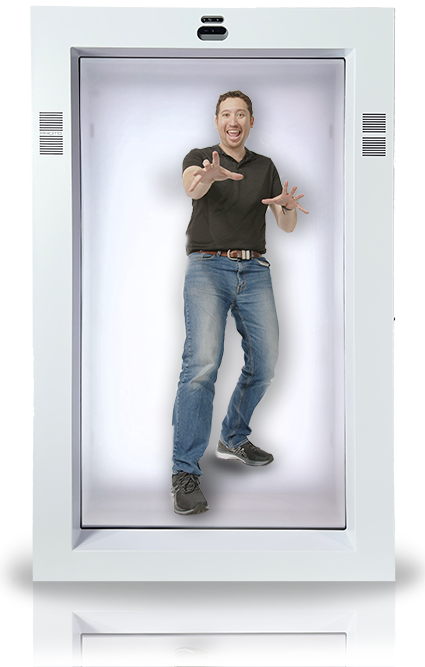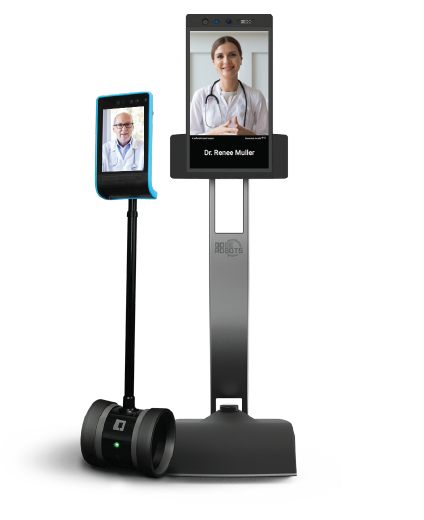Explore
Holographic Medical
Teleportation
Holographic Medical Teleportation represents a significant leap forward in telehealth, facilitating real-time, immersive, 3D interaction for healthcare professionals and patients alike.
As a healthcare professional, you always look for ways to improve patient care and maximise productivity. Remote Telepresence offers a unique opportunity to do that. Telepresence technology enhances patient care and reduces costs by allowing healthcare professionals to monitor and interact with patients remotely.

Remote and regional healthcare facilities are struggling to deliver high-quality medical services due to severe resource limitations, especially skilled professionals. The ability to provide consistent and comprehensive care is greatly strained in these locations, disproportionately affecting those who reside in remote and underserved communities. This results in a major healthcare access inequality, putting our regional residences at a significant disadvantage.
TeleIn has identified these growing issues and tackles this head-on by leveraging advanced telepresence technology solutions. These technologies are designed to bridge the physical divide, linking remote healthcare facilities with specialised clinicians and valuable resources, or bringing remote patients to specialised clinicians, and facilitating world-class remote healthcare.
This enabling technology benefits hospitals, aged care facilities, and even general practitioners to significantly expand their reach, offering their expertise to those who otherwise wouldn't have access to it.

Holographic Medical Teleportation represents a significant leap forward in telehealth, facilitating real-time, immersive, 3D interaction for healthcare professionals and patients alike.

Remote presence robotics in healthcare is a transformative technology that allows healthcare professionals to interact with and care for patients remotely. This technology uses advanced telecommunication tools to facilitate real-time, interactive patient care.
As the Covid-19 pandemic continues to impact the healthcare industry, healthcare professionals are searching for ways to keep staff and patients safe.
Telepresence technology offers a solution, enabling doctors and nurses to interact with patients while maintaining a safe distance remotely. Isolation wards, in particular, can significantly benefit from telepresence, as it allows healthcare workers to communicate with multiple patients without the risk of exposure to the virus.
In addition to improving patient access to the best possible care, telepresence robots offer a number of advantages over traditional telehealth methods. For example, telepresence robots allow for more in-depth patient interactions and provide a better view of the patient's condition.
Telepresence robots are also helping to bridge the gap between metro health staff and regional hospitals. Telepresence technology allows metro specialist health staff to better assist in regional tier 2 and 3 hospitals, improving patient care in these underserved areas.
We're about connecting, empathising, and comforting. We're about bridging the gap between the sterile digital interface and the warmth of human interaction. We invite you to join us on this exciting journey as we continue to innovate and redefine the future of healthcare. Let's dare to think differently about telehealth. Let's dare to bring the human touch back into healthcare.

Telepresence technology is a form of remote communication that allows healthcare professionals to interact with patients remotely. This is achieved through telepresence robots equipped with cameras, microphones, and other advanced features that enable remote communication.
Telepresence robots are designed to be user-friendly, making it easy for healthcare professionals to get up and running quickly and start delivering care to patients remotely. In healthcare, telepresence technology is used to improve patient care, reduce costs, and increase efficiency by allowing healthcare professionals to monitor and interact with patients remotely.
Telepresence technology improves patient care in a number of ways. Telepresence technology can improve patient care and reduce costs by allowing healthcare professionals to monitor and interact with patients remotely. With the ability to remotely diagnose and prescribe treatment, telepresence robots can help to reduce the need for costly in-person visits while also improving communication and collaboration between healthcare providers.
Additionally, telepresence robots offer a range of features and customisation options, allowing healthcare professionals to tailor their telepresence experience to their specific needs. This can help to improve patient care by ensuring that patients receive the most appropriate treatment and care.
Variations of telepresence robot technology can also transport medical equipment and supplies to areas needed, improving care access and saving time and human resources.
Overall, telepresence technology offers several benefits that can help to improve patient care, making it a valuable tool for healthcare organisations.
Yes, telepresence technology can be used to treat patients in remote or underserved areas. One of the critical benefits of telepresence technology in healthcare is its ability to connect patients with specialised care, even if they are located in a remote or underserved area. Telepresence technology allows patients to receive care from specialists located anywhere in the state or country, improving access to quality care and reducing the need for costly in-person visits.
For example, telepresence technology can remotely "walk with the patient" and assess their condition, allowing specialists to make a diagnosis and recommend treatment without the need for the patient to travel. This can be particularly useful in cases where transportation to a healthcare facility may be difficult or impossible, such as in the case of natural disasters or other emergencies.
In addition to improving patient access to care, telepresence technology can also help to reduce costs by eliminating the need for ambulance transportation. By allowing patients to receive care remotely, telepresence technology can help to reduce the burden on ambulance services, freeing up resources for more critical cases.
Overall, telepresence technology offers a range of benefits for patients in remote or underserved areas, improving access to care and reducing costs.
Telepresence technology in healthcare is designed with security and privacy in mind. These advanced machines are equipped with end-to-end 128-bit encryption, ensuring patient data is protected and secure. Telepresence technology is HIPAA compliant, meaning that it meets the strict standards for protecting patient health information.
For IT administrators, telepresence technology also offers an on-premises deployment option, allowing them to control the entire technology and security stack if desired. This can provide added peace of mind and ensure that patient data remains secure and protected at all times.
Overall, telepresence technology in healthcare offers advanced security and privacy features, making it a safe and secure tool for improving patient care.
One of the main advantages of telepresence robotic technology is that it is often more affordable than traditional telehealth systems.
Telepresence robots are typically less expensive to operate and maintain than other telehealth technologies, making them a cost-effective option for healthcare organizations.
Telepresence technology is also more portable than traditional telehealth methods, making it easy to deploy in various settings. This makes it particularly useful for treating patients in remote or underserved areas, where access to healthcare can be limited.
Overall, telepresence technology offers several advantages over traditional telehealth methods, making it a valuable tool in the delivery of healthcare.
Contact TeleIn, Australia's largest supplier of telepresence solutions to the health and aged care sectors, to learn more about the benefits of telepresence technology in healthcare. With a strong presence in all states and territories, TeleIn has a proven track record of helping healthcare organisations implement telepresence technology to improve patient care and reduce costs.
Our team of experts can provide you with detailed information on the benefits of telepresence technology and how it can be customised to meet the specific needs of your healthcare organisation. Contact us today to learn more and schedule a demonstration of our telepresence solutions.
If you're interested in learning more about the benefits of telepresence technology in healthcare, consider signing up for our monthly insights email newsletter.
Our newsletter is a great resource for staying up-to-date on the latest developments in telepresence technology and its use in the healthcare industry. Plus, with exclusive content and special offers only available to newsletter subscribers, it's a great way to stay connected with TeleIn and get the most out of your telepresence solutions.
So don't wait - sign up for our monthly insights email newsletter today!